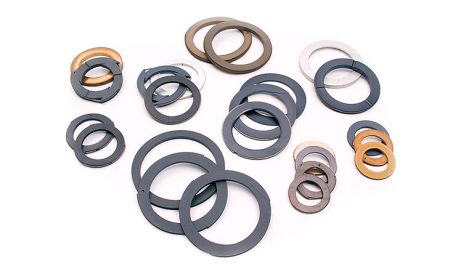The improvements in the living standards of people, especially in developing countries, are leading to the rising vehicle sales. This has made automotive one of the most competitive industries, with automakers drastically increasing their production to meet the growing demand. As per Organisation Internationale des Constructeurs d’Automobiles (OICA), from 56,258,892 in 1999, the number of automobiles produced around the world jumped massively to 91,786,861 in 2019. This has led to a rising demand for raw materials, including iron, steel, plastics, glass, rubber, and paints and coatings.
Paints and coatings are rather important for automakers to market their vehicles, as the look-and-feel factor often decides if someone buys a particular vehicle or not. Thus, with the increasing vehicle sales, the automotive OEM coatings market is set to grow from $10,997.4 million in 2018 to $13,661.4 million by 2024, at a CAGR of 4.2% during 2019–2020, as per P&S Intelligence. This estimation, however, does not include the impact of the COVID-19 pandemic, which has almost sent the automotive industry to an early grave in 2020.
But, thankfully, since the third quarter of 2020, economies around the world have started opening themselves for business, as the lockdown implemented by them either fulfilled its purpose or cause more harm than benefit. With manufacturing plants restarting operations in a graded manner, the consumption of paints and coatings by vehicle manufacturers would pick up gradually as well. Much of these products is expected to go in passenger (light) vehicle production, as with the risk of COVID spread still looming after the official end to the pandemic, people would prefer private transport than shared mobility.
At the time of manufacturing, every vehicle undergoes at least four layers of coating: primer, basecoat, clearcoat, and electrocoat. Primer is the first of those to be applied, and its main job is to fill in any dent or abrasion created during shell manufacturing and level the body out. The basecoat, which is actually the paint, is applied next; this is what contains the actual color. Then comes the electrocoat, which stays in contact with environmental forces, such as wind, moisture, and heat. Among these, the highest amount of paints and coatings is consumed for the clearcoat, as it is supposed to protect the automobile exterior from UV radiation, which is why a thicker clearcoat is required compared to other coats.
Paints and coatings used by automotive OEMs can be water-borne, solvent-borne, powder, or UV-cured. Presently, the consumption of solvent-borne coatings is the highest, but that of water-borne coatings is increasing rapidly too. Solvent-borne coatings are laden with volatile organic compounds (VOCs), which are harmful to not only the environment, but also for people. Constant exposure to high concentrations of VOCs can cause central nervous system, liver, and kidney damage, nausea, headache, loss of consciousness, and even cancer, in extreme cases.
This is exactly the reason paint-producing companies are looking to advance the technology of these products. In this regard, the adoption of powder coatings is rising; for instance, BWM is shifting to such alternatives for the clearcoat process, as they make the film thickness uniform. Additionally, the usage of powder coatings produces neither paint sludge nor wastewater, the latter of which is especially important if people want to conserve water and also protect waterbodies from pollution.
The Asia-Pacific region is the largest automotive OEM coatings market presently, as it accounts for the largest vehicle production. China, Japan, India, and South Korea account for the highest automobile production figures in the world, on account of their high population and low-cost labor and raw materials, the latter two of which have encouraged numerous European and North American automakers to carry out manufacturing in these countries. With time, as more people are able to afford vehicles here, auto production will rise further, resulting in the increasing demand for paints and coatings by automotive OEMs.
Therefore, not only is the consumption of paints and coatings in the auto sector rising, but a shift is also being witnessed toward eco-friendly coatings, driven by technological advancements.





